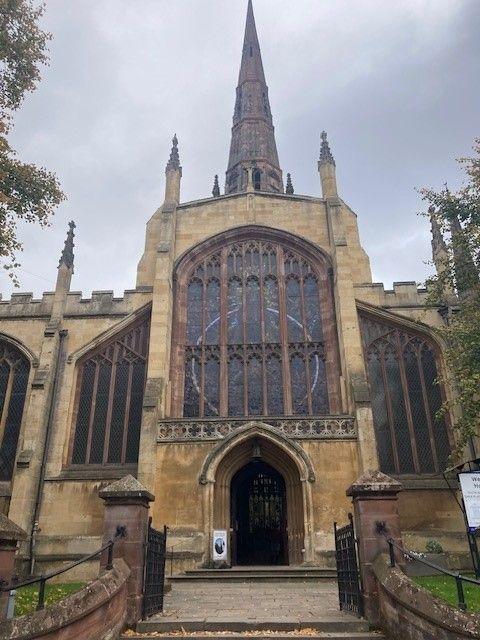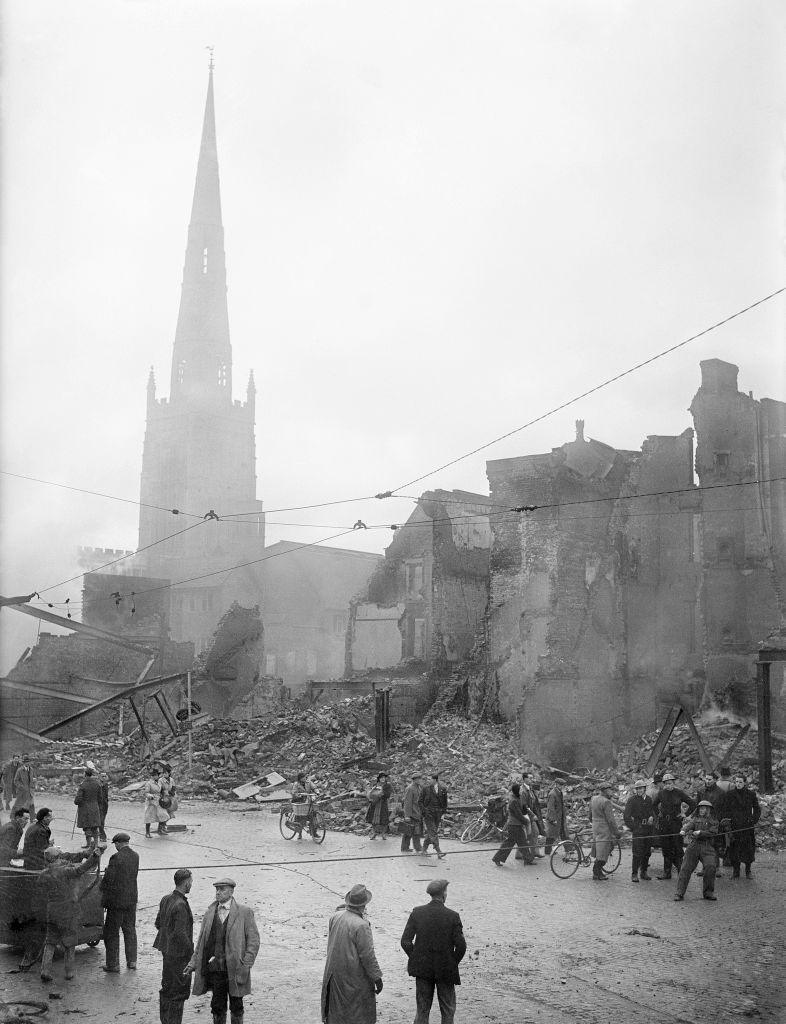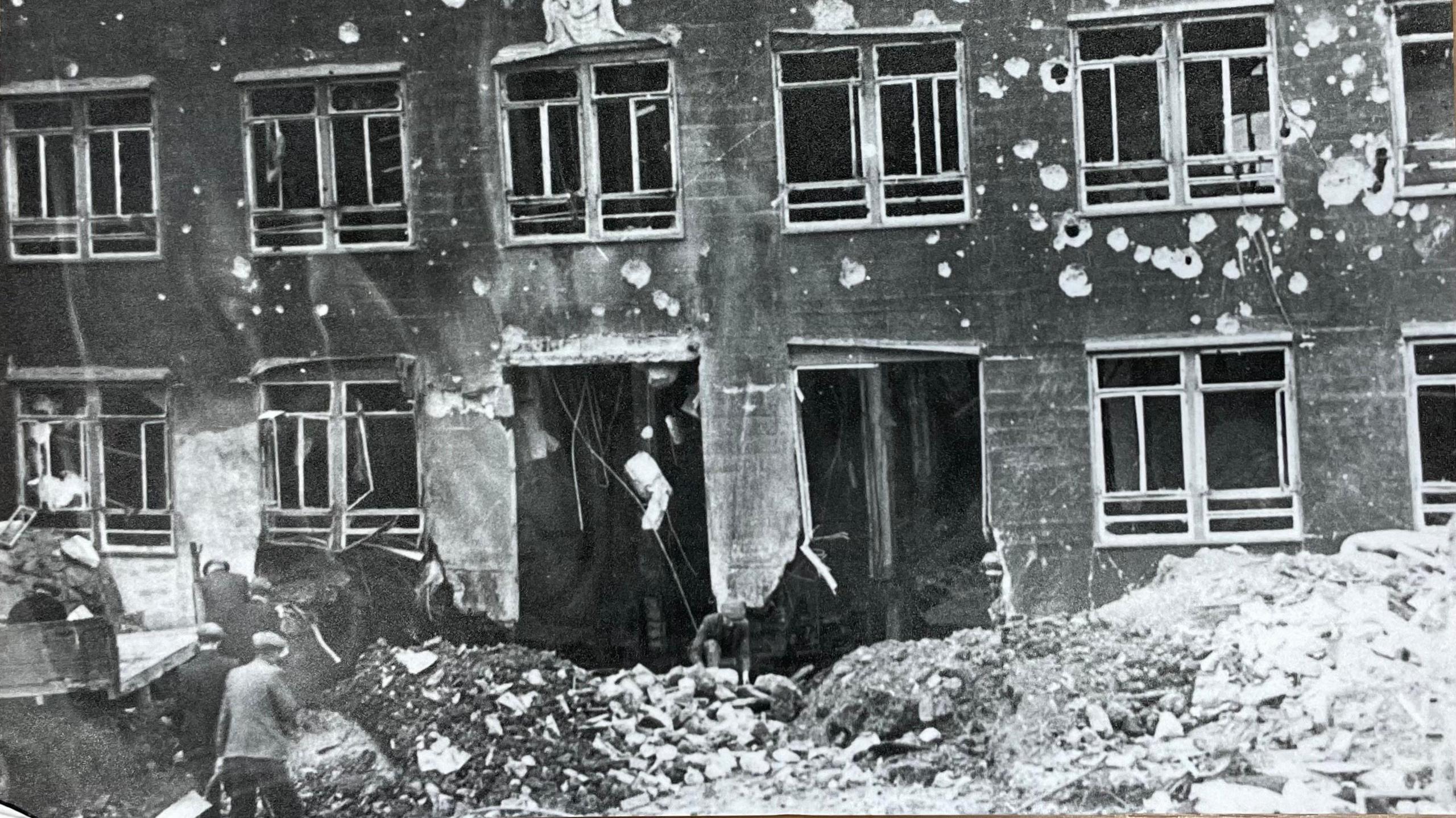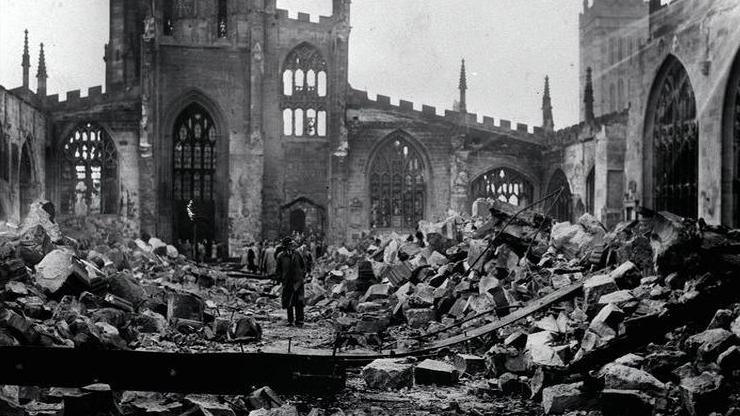The vicar who saved his church from the Blitz
The church that survived the Coventry Blitz
- Published
When German bombers unleashed a devastating raid on Coventry on 14 November, 1940, one man made for the roof instead of seeking shelter.
The Reverend Graham Clitheroe had been preparing for such a World War Two attack, and was determined not to let his 900-year-old church, Holy Trinity, fall. Sadly, the same could not be said for the city's cathedral, which was to be destroyed.
With the help of his three sons, Mr Clitheroe had amassed quantities of sand and water in static tanks on the church's nine roofs. They added stirrup pumps, to immediately douse any flames.
"I think really the church was as prepared as it could possibly have been," says Catherine Kendall, who works there today.
The vicar's heroic stand is now being revealed as part of the BBC's Secret Coventry series.

The Reverend Graham Clitheroe was proud of the preparations he had made to save his church
Holy Trinity Church stands in the heart of Coventry, a stone's throw from the ruins of the city's cathedral.
Attended in the 19th Century by novelist George Eliot, it boasts one of the city's famous three spires and has also survived an earthquake, and Henry VIII's Reformation.
But while Mr Clitheroe was far more ready than other city folk, no-one could have prepared for the intensity of the Luftwaffe's 14 November overnight blitz.
'Threw bombs off roof'
The sirens sounded in the evening, as many were still out in the streets.
It prompted Mr Clitheroe and his curate, the Reverend Kenneth Thornton, to take to the roof, as the first of 30,000 incendiary bombs began to fall.
"They were keeping an eye constantly on these nine roofs and on the building outside to check where fires might be starting," Ms Kendall said.
Records suggest the men "actually picked [the bombs] up and threw them off the roof".
"Kenneth Thornton admitted at one point during the night that he was really scared about what he was having to do, and that he wasn't sure he could withstand it," she said.
"But Clitheroe is very clear that he did everything that was required and more, and he built up his confidence by simply surviving and taking an active part in saving the church."

Holy Trinity Church dates back to the 12th Century
From the roof, the pair could see fires burning all around them.
A device fell just outside part of the church known as the Archdeacon's Court, creating a large crack.
This was followed by the first direct hit, on the building's Marler Chapel, where falling timbers left its red-and-black tiled floor indelibly charred.
'Some screamed, some whirred'
To the east, the priests watched Coventry's cathedral catch alight, but knew they could not help.
"There were only two of them, and there were fires starting all over the church," Ms Kendall said.
In Mr Clitheroe's later account, Coventry Under Fire, he described the sounds the bombs made.
"The swoosh as they came down, it sounded like heavy rain. Some of them screamed, some of them whirred," he wrote.

Holy Trinity's spire rises above a scene of devastation following the Blitz
Later in the night, the priests offered shelter to exhausted firemen, providing camp-beds in the North Porch.
Despite all the men's effort, the church did not survive unscathed, worst of all losing its grand stained-glass windows.
But the following morning, as terrified residents finally dared to leave their shelters, revealed parts of the city around it destroyed.
"People dazed in the streets. Huge quantities of water. Smell of gas. Just broken buildings everywhere. It must have been so shocking and so frightening," Ms Kendall said.
More than 560 people had been killed, and 41,500 homes damaged.

Charred tiles remain in a part of the church that was directly hit during the Coventry Blitz
Holy Trinity went on to withstand further raids, and the brave vicar continued in his post until 1961, when he retired.
After Mr Clitheroe died in 1968, he was buried in a place of honour in the church's chancel.
"He was quite dismissive I think of other clergymen who said, 'Well if it falls, it falls'," Ms Kendall said.
"It was very clear he was very proud of the arrangements that Holy Trinity had been able to make under his leadership to withstand the attack that night."
Get in touch
Tell us which stories we should cover in Warwickshire
Follow BBC Coventry & Warwickshire on BBC Sounds, Facebook, external, X, external and Instagram, external.
Related topics
- Published3 days ago

- Published5 days ago

- Published3 November
